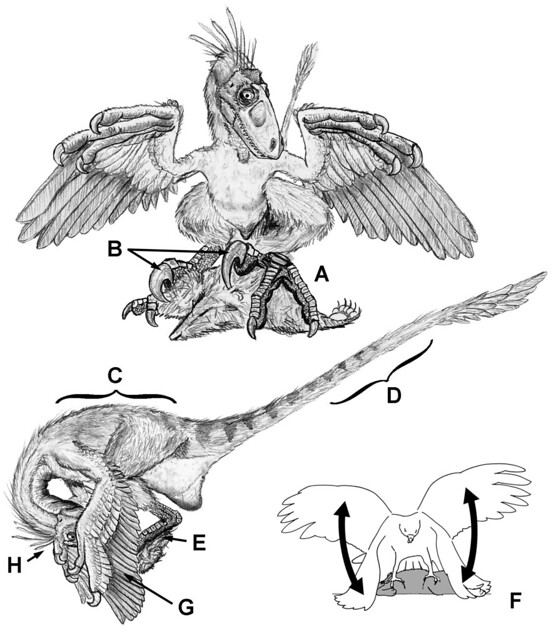In my last post, I promised to explain how raptors may have used their protowings to hunt. A recent and intriguing hypothesis, called the Raptor Prey Restraint

A Haast’s eagle swooping in for the attack against two giant moas.
(RPR — pronounced “ripper”) model, claims that they would have hunted using a process called “prey-riding.” Prey-riding is exactly what it sounds like. The predator jumps on top of its prey, grabs it with its feet and uses its wings to maintain its balance until the prey collapses out of exhaustion. Sound a little far-fetched? It actually happens even today in some predatory birds — coincidentally also called raptors. Here is a short video of a Galapagos hawk prey-riding a marine iguana. There are also reports in Mongolia of golden eagles prey-riding reindeer calves, and locals even claim that they’ve seen the eagles attacking full-grown reindeer.
It is also hypothesized that the extinct Haast’s eagle hunted giant moas in New Zealand by prey-riding. Haast’s eagle was the largest known true raptor, with estimates of up to a 9 foot wingspan and weighing about 35 lbs. The giant moa was a flightless bird, standing up to 12 feet tall, which was hunted to extinction within 100 years of the arrival of the Maori.

This is a figure from the paper which proposed the RPR model. The top image is the general pose, with the raptor poised on top of its prey, incapacitating it. The bottom-left image shows the raptor reaching down between its legs to feast on its kill while the bottom-right image shows the stability flapping motion.
The reason that this RPR model is particularly interesting is that it might help to explain the development of avian flight. The traditional argument about how flight evolved was a dichotomy between the “trees-down” and the “ground-up” models. Some people argued that the ancestors of birds were gliding animals that lived in trees. The other camp claimed that they were running animals that used their arms to run faster and gain an aerodynamic advantage. Neither of these explanations is particularly satisfactory. As it happens, there is a different model, called
the “Pouncing Proavis” model, which not only better predicts the order of evolutionary development seen in the fossil record than either of the other models but also happens to fit very well with the RPR model of raptor hunting. Based on this model, the flapping flight stroke evolved as “stability flapping” (seen in the above video) in order to maintain balance on the animal’s prey. This hunting method would develop from a pounce to a swoop and eventually to true flapping flight.
This model has not been fully accepted by the scientific community, but in my own opinion, it is the best explanation of the evolution of flight in birds that has so far been proposed.
If you missed my first post or any of the others, check out Meet the Paleontologist!
